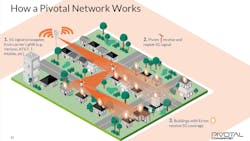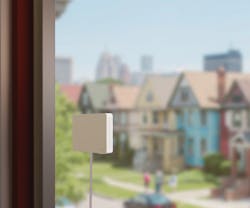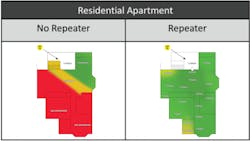mmWave Beamforming Repeaters Can Help Improve Broadband Access and Digital Literacy in the US
The American Library Association defines digital literacy as “the ability to use information and communication technologies to find, evaluate, create, and communicate information, requiring both cognitive and technical skills.” While it can include offline activity like using an e-reader, digital literacy depends greatly on access to the Internet. The quality of that access depends on availability, speed, and affordability. These qualities influence digital literacy acquired in schools, but also, in recent years, from the home.
Two examples illustrate this well. Finland, which ranks third in the world on the World Economic Forum’s Global Competitiveness Index, has among the highest levels of access to the Internet. According to The Economist Intelligence Unit, the US could raise its GDP 5.5% by 2025 if it raised improved broadband access to Finland levels1. This article makes the bold claim that 5G millimeter wave (mmWave) repeaters are essential to improving Internet access in the United States, and with it, improved learning and productivity.
“Pew Research shares that 25% of households, especially low-income ones in rural areas, do not have broadband3. Given that only 1% of schools do not have Internet access4, this has been termed the “homework gap”. Contrast this with Finland that made Internet access a legal right in 2010, rather than a privilege reserved for those with the means of access.”
Before 5G mmWave
Before introducing 5G mmWave, let’s examine Figure 1 to understand broadband access in the US based on population percentages. Most of the population has access to at least one provider offering at least 25 Mbps down and 3 Mbps up, the minimum to qualify as broadband by the FCC in 2020. With data traffic growing at 40% a year, many would consider 25/3 as unqualified for broadband in 2022, and it’s certainly far less than Finland connectivity levels closer to 1000/100 Mbps. Faster speeds are available but unaffordable to many because of limited competition among providers.
Some reports say broadband in the US can be characterized as a duopoly between two cable providers—Comcast and Charter. Data shows 22 million people have access to only Comcast while 95 million people have access to only Comcast and one other provider2. According to Leichtman Research: Cable accounted for almost all [95%] of 2021’s growth, 2.8 million and change, and most of that came from sign-ups at the two biggest Internet providers in America. Comcast added 1.33 million subscribers for its Xfinity service to reach 31.9 million total, and Charter’s Spectrum service took in 1.2 million new subscribers to hit 30 million.
And as we all know, many areas in the US have no broadband access at all. Pew Research shares that 25% of households, especially low-income ones in rural areas, do not have broadband3. Given that only 1% of schools do not have Internet access4, this has been termed the “homework gap”. Contrast this with Finland that made Internet access a legal right in 2010, rather than a privilege reserved for those with the means of access.
5G in Two Acts
With many US adults accessing the Internet solely through their smartphones, they connect via “mobile hotspots”. Accessing the Internet this way is more expensive, and often limited by data caps. Thus, making it more expensive than accessing it by 5G fixed wireless access (FWA). In fact, 5G FWA is beginning to challenge the cable Internet providers like Comcast and Charter.
Act I – 5G Mid-Band
Mobile Network Operators (MNOs) like Verizon and T-Mobile are deploying FWA in earnest because it represents a brand-new source of revenue. Currently, much of the deployment is focusing on a 100 MHz channel around “mid-band” frequencies at 3.5 GHz. Given data consumption, 100 MHz won’t last long. More spectra will be required to shore up lower band mobile capacity in dense urban markets as early as 2023, according to Mobile Experts5. MNOs may enlist 3.5 GHz for mobile use but doing so would jeopardize their FWA service. They can densify with more 3.5 GHz base stations to create more capacity but that would result in potentially increasing network interference. Creating narrow spatial corridors with beamforming could reduce interference, but a suitably narrow, five-degree beam at 3.5 GHz would require an unacceptably large flat-panel antenna, i.e., aperture.
Where will US operators find more spectral capacity? The answer could lie in mmWave—at the fiber-challenging, Finland-level 800-1000 MHz channels around 28 GHz. Some mmWave deployments are already underway.
Act II – 5G mmWave
The Achilles’ Heel of mmWave is propagation. mmWave is line-of-sight. It won’t bend around or go through buildings. But this limitation has its advantages. At mmWave frequencies, narrow spatial corridors with five-degree beams can be formed with apertures, i.e., antennas, as small as 5” by 5”. mmWave directivity like this allows operators to target individual buildings, even windows, by profiling on demographics, competitive offerings, broadband speeds, and so on. This way, a mmWave FWA network can grow organically, funding itself with demand.
Without repeaters, operators would have to deploy lots of mmWave small cells called Next Generation Node Bs or “gNBs” mounted to utility poles. This would require fiber-trenching and lengthy permitting for each one. Beamforming repeaters make mmWave deployments economically feasible by minimizing the number of gNBs deployed. This idea is illustrated in Figure 2, where multiple gNBs would be required in the absence of outdoor repeaters. Unlike gNBs, repeaters require no fiber connection. Repeaters have lower cost, size, weight, and power consumption (C-SWaP) than gNBs. The lowest C-SWaP repeaters use Holographic Beam Forming®.
Figure 2 shows network repeaters, which help highly directional mmWave signals to get around obstacles like buildings. Since mmWave can’t penetrate buildings, subscriber repeaters are often required to bring the signal indoors, typically through or under the window. Subscriber repeaters come in many varieties—all-indoor, all-indoor integrated with Wi-Fi, all-outdoor, indoor-outdoor for low-emissivity glass, and so on. Figure 3 shows a customer-installable, all-indoor repeater whose beamformer directs a signal from the nearest gNB and gently floods it into the interior. This repeater is powered from an indoor wall outlet, and confers super-fast, low-latency, native mmWave coverage to enable next generation applications like telepresence (Figure 4). mmWave can also serve separate customer premise equipment (CPE) for overlapping Wi-Fi-mmWave coverage. Figure 5 compares indoor mmWave coverage in an apartment with and without a window-attached subscriber repeater.
5G mmWave Planning
We’ve established that 5G mmWave networks without repeaters can be prohibitively expensive and time-consuming to deploy. But how many repeaters does an operator need and where are they deployed? What about cost and coverage trade-offs? The answer to these and other planning questions requires a new breed of cloud-driven network modelling software that, for an area of several square miles, can crunch terabytes of 15-centimeter resolution GIS data and angle-of-incidence and signal strength measurements. Traditional cellular planning tools specializing in frequencies below 6 GHz are not ideal because their tens-of-meter resolution would miss individual MDU windows, for example, not to mention an entire MDU building. They also lack the artificial intelligence (AI) to distinguish a home from a shed or garage.
This article made the case that greater digital literacy and GDP per capita depend on better broadband access. Making 5G mmWave networks economically viable will help break the current cable duopoly that limits the availability and affordability of broadband access in the US. 5G mmWave using network and subscriber repeaters is an economical option to improve broadband access in the US.
REFERENCES AND NOTES
1. “Connecting learners: Narrowing the educational divide,” by the Economist Intelligence Unit, 2021
2. “Profiles of Monopoly: Big Cable and Telecom,” by Community Networks, August 2020
3. “Internet/Broadband Fact Sheet,” by Pew Research Center, 2021
4. “The classroom connectivity gap is closed,” 2019 State of the States, by Education Superhighway
5. “5G Millimeter Wave 2022: Radio Architecture and Outlook,” by Mobile Experts, March 2022.
ABOUT THE AUTHOR
Kent R. Lundgren is VP of Marketing, Pivotal Commware. He has more than 25 years of experience in the wireless industry and related disciplines. For more information, please email [email protected] or visit www.pivotalcommware.com. You can also follow them on Twitter: https://twitter.com/PivotalCommware and LinkedIn: https://www.linkedin.com/company/pivotal-commware/
About the Author
Kent R. Lundgren
VP of Marketing, Pivotal Commware
Kent R. Lundgren is VP of Marketing, Pivotal Commware. He has more than 25 years of experience in the wireless industry and related disciplines. For more information, please email [email protected] or visit www.pivotalcommware.com. You can also follow them on Twitter: https://twitter.com/PivotalCommware and LinkedIn: https://www.linkedin.com/company/pivotal-commware/





